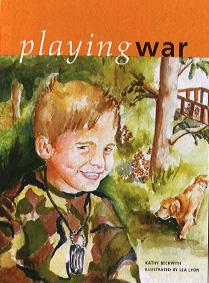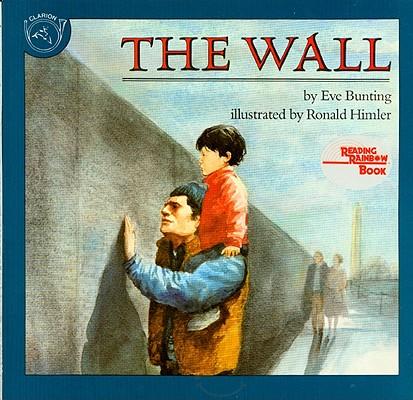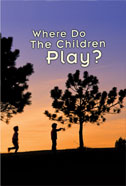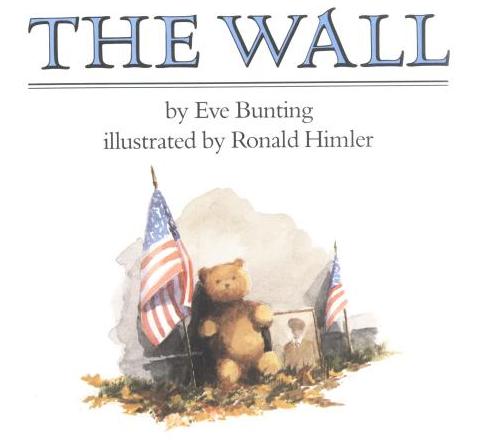 May 22, 2014 Adding this article from The Guardian Call of Duty: Advanced Warfare; a non-gamer’s guide and Jinny Gudmundsen’s Common Sense Media’s post, “10 Most Violent Video Games and 10+ Alternatives as it’s important to reinforce that Memorial Day is about honoring the fallen in “RL” (real life) vs on a leader board.
May 22, 2014 Adding this article from The Guardian Call of Duty: Advanced Warfare; a non-gamer’s guide and Jinny Gudmundsen’s Common Sense Media’s post, “10 Most Violent Video Games and 10+ Alternatives as it’s important to reinforce that Memorial Day is about honoring the fallen in “RL” (real life) vs on a leader board.
Critical thinking, parental pre-screening and co-viewing is key for media literacy in game play no matter where you stand on the issues…“Teach your children well.”
Original Post: June 1, 2010 Whether it’s top-selling videogames (Call of Duty, Modern Warfare2, Gears of War, Halo franchise, etc) or combat’s media depiction in film, The War Play Dilemma has sent plenty of verbal bullets flinging among families about play, purchase and policies when it comes to violence, particularly post-911 with real troops on the ground in this reality show called life.
“No guns, please,” I’ve heard many parents declare on birthday invitations. “Not even super soakers?” another implores. And thus the judgmental eye rolling begins.
“You can’t bubble wrap them from peers,” says one. “What’s the big deal, we used to play war as kids and I didn’t turn into Rambo” says another. (insert generationally relevant pop culture icon of the parent du’jour, GIJoe, John Wayne, whatever)
So before you diss that ‘picky parent,’ or get on the self-righteous ‘not in my house’ tangent, realize that no matter what your own political filters and lenses might be, those conversations should be driven by critical thinking skills, media literacy and respect for other ways of thinking. In short, do your own work first, particularly when it comes to all things “screen”…
“Whether intentional or not, any author, director or game producer invariably recreates the world, be it through descriptive prose, through light captured on camera, or through three-dimensionally modeled environments; they mimic reality. But also in the mediation of the real world, they add other elements they understand to be real. Human emotions, actions and ideologies are mediated on screen or page. And through the mediations of the real, messages are given to us about the real. We remediate what we see on the screen as we absorb and learn from what is presented to us.” —read more of David Sykes’ e-International Relations paper titled, “9/11, the war on terror, and Halo”
That little nugget saved me about 1000 words on the hows and whys of pop culture’s power and ambient messaging as we’ve hammered home a gazillion times in terms of everything from patriot/war messages to sexualization cues seeping inside childrens’ psyches in terms of ‘place and value’ in our cultures…
Huffington Post uncorked the violent video game controversy once again a couple of days ago in this post “Violent Video Games Touted as Learning Tool” which has been batted around the media sphere in “does it or doesn’t it” rhetoric as explosive among academics, gamers, parents, youth, and simulation scientists akin to a ‘Mortal Kombat’ siege.
So let me start go on record forewarning this post is NOT about teen/Gen Y gamer warfare…I need to interview Diane Levin and Nancy Carlsson-Paige who authored The War Play Dilemma directly for that one…
This post is geared toward how we can USE MEDIA TO COMBAT unrealistic portrayals of war, suffering, and human rights abominations to arm very young kids early on with media literacy.
In essence, the desire (need?) to create a ‘kinder gentler’ nation of human beings universally, without ‘games of war’ even IN the conversation other than giving context to this very sobering infographic via Online MBA that reveals gaming stats of this $15 billion industry.
Yes, it deserves a deep dive analysis post in itself. Just. Not. Today.
Same goes for the ‘serious games’ that HELP kids deal with warfare from a digital perspective, like this one on dodging minefields in “Landmine Lookout” to leverage informal learning. But here’s the infographic for another time and post:

[Source: OnlineMBA.com]
So…Coming off of Memorial Day weekend, having just written my Teach Your Children Well resource roundup about safe zones for dialog on tough topics like war/peace today I want to share two very cool younger kids’ picture books that accomplish this well: Playing War and The Wall…
I also want to add a very personal moment from our ‘triple flame candle’ ceremony dockside that cut through the media clutter of what Memorial Day is all about. Why?
Because if media and marketing are cashing in on 20 million players racking up 17 BILLION hours, the least I can do is put the focus on what WE AS PARENTS and EDUCATORS can do to add context and counter-marketing into the mix a smidge in an attempt to embed some media literacy.
So here goes…MY Memorial Day media mashup to REsensitize children to the realities of the ultimate sacrifice of war.
As our skiboat was put away from a family day towing kids on the lagoon, we shared our ‘flame of honor’ tradition anew…this time with beloved godkids who are now 12, 13, 14-15. (the same ones raised in an emphatic ‘no guns’ household who segued to preteen boyhood with lots of compromises in the sights and sounds of media around them)
Unlike me, none of these kids were raised as military dependents, so frankly, I wasn’t sure how this ritual would land on them.
Each Memorial Day we light a flame of to temper all the ‘long weekend fun’ with solemn realization that war is never ‘fun’…and name someone we know who has been impacted by service, either directly or tangentially, from soldier’s heart to civilian wounds and real life heroes impacted by both. (adults, I highly encourage you read the ‘story behind the story’ of Spc. Joseph Dwyer of insta-media photo fame during the Iraq invasion)
My three flames were lit for my career Navy intell dad, my Annapolis-turned UCSB Department of Peace eco-youth activist bro, and my former Vietnam draftee serving stateside as an army medic spouse, just to give you a feel for ‘range’ in one family snapshot…Needless to say, “It’s Complicated” and clearly not about ‘first person shooters’ in videogames.
My godkids got to see a side of their “Uncle Gar” they never really understood this past weekend on our dock, when he pulled a tracing of a name of a popular teen from his high school who never came home, and shared a poignant story of his OWN visit to the Wall to see his peer memorialized decades later.
Let’s just say the flame ceremony was not lost upon them. At. All.
 With that in mind, one of the picture books I highly recommend as a media must and a “read aloud” for families to help deconstruct and open up conversation around the ‘war play dilemma’ is called The Wall by Eve Bunting, (review here) geared toward 6-9 year olds, who more often than not, are already in ‘twitch game’ mode of blowing up stuff in video games. (pardon the 21st century need to digest some context pronto)
With that in mind, one of the picture books I highly recommend as a media must and a “read aloud” for families to help deconstruct and open up conversation around the ‘war play dilemma’ is called The Wall by Eve Bunting, (review here) geared toward 6-9 year olds, who more often than not, are already in ‘twitch game’ mode of blowing up stuff in video games. (pardon the 21st century need to digest some context pronto)
Awash in muted tones and beautifully illustrated, The Wall isn’t a preachy ‘downer’ it’s a bittersweet tale of a father/son visit to the Vietnam Veterans Memorial in Washington D.C. to see the name and take a tracing of this grandfather he never knew.
I’ll admit, I wasn’t quite prepped for our own quivering lipped poignancy this past weekend with the preteen godkids being exposed to such ‘up close and personal’ stories…In younger years it might have constituted ‘over-sharing’…but now that they’re old enough to really ‘get it’ now, I think it helped prepare them for every “Dude, don’t be such a wuss, blow their heads off” MMORPG moment (multiplayer online role play games) and sophisticated siege encounter if they go that route (or if they haven’t already).
Again, everyone has their own ‘hard stop’ in terms of what is/isn’t “a game” …and there are multiple levels of engagement and desensitization at various ages and stages…so rather than enter the battleground of media saturation and judgment calls in this post…be clear:
I’m of the mindset to ‘arm yourself with reality if you’re going to blur the lines of fantasy’ as a prequel to ANY and ALL media encounters. (see resource list on violence/anti-violence and kids play at the end)
The second book I absolutely LOVE for adding context early on captures the playground/schoolyard ‘war dilemma’ of pretend play where we’re seeing more and more young kids ‘acting out’ videogames…
Yes, I know, many shrug off the pretend play as not much more than flinging pine cone ‘grenades’ at one another or aiming sticks in squint and scope targeting of combat make believe. I bought the book at the fabulous “Reach and Teach” site run by friends of mine who source all kinds of excellent media musts, and who I readily applaud for opening all kinds of human rights conversations to help those of us striving for a healthier view of media’s role in portraying peace and social justice.
 The picture book is called Playing War by Kathy Beckwith which ‘boldly goes where no one has gone before’ in peeling back layers of conversation with compassion, candor and ‘kid-speak’ without even a whiff of politics and stilted rhetoric.
The picture book is called Playing War by Kathy Beckwith which ‘boldly goes where no one has gone before’ in peeling back layers of conversation with compassion, candor and ‘kid-speak’ without even a whiff of politics and stilted rhetoric.
It’s a simple tale about kids “playing war” outdoors (yah, I know, a 21st century rarity in itself) with all the basics of team play/laser tag or any standard snowball fight, like storming up ‘ammo,’ strategizing ambushes, and ‘us vs. them’ thinking.
Without being heavy-handed, the story beautifully tells of a new kid the others have played with over the summer but know little about in terms of where he ‘came from’ or his personal backstory…
His “mission” is to gather pine cone ammo to place in a hat in this game he doesn’t quite understand, he poignantly offers up only one, “One is enough”…and the plot point unravels from there, shifting from “No way, a REAL war? Did they let kids be soldiers? Did you have an M-16?” to the emotionally charged truth that his family was taken out ‘by mistake’…”the shells were supposed to hit somewhere else.”
The author does a great job of capturing kid culture in terms of how they handle discomfort (like when he ‘has to leave early’ suddenly, or how they play basketball to diffuse the dialog into matter of factness, finally setting the ball down to begrudgingly ‘spill it’ after dodging it altogether for months) plus I love the subtle ending, which again seems very authentic instead of a crescendo of melodrama, like a bad reality show.
Books where children are thoughtful decision makers in control of the conversation not ‘dumbed down’ into stereotypes, gender ‘reactions’ and characters used as propaganda to further an author’s own agenda will always get my thumbs up…and Playing War accomplishes this well.
I’ll also add that Reach and Teach as an online resource (and soon to be San Mateo store, 178 South Blvd, yay!) takes it a step further with a ‘study guide’ of prompts, questions, and fun book club style activities (collage, making a top/toy etc.) which makes it a turnkey choice for some of my own hands-on media literacy fun. Example:
Playing War will help inspire classroom conversations about:
• Games and entertainment that include violence
• Friendship and the importance of respect and empathy
• Conflict resolution skills
• The effects of “real” war on children and families at home and abroad
• Ways in which kids can learn to promote non-violence and peace
• Refugees and immigrants
Doesn’t get much easier than that…Though many will argue that their strong anti-bias stance is a bias in itself. Which is true. And good media literacy to be aware of along with ways tolook at media literacy with a strong eye toward propaganda to hunt down the nuance, as Frank W. Baker does so well with Media Literacy Clearinghouse and lesson plans. (again, see resource list below!)
 Finally, I’ll end with two more ways to use media to open up conversations, film and music…
Finally, I’ll end with two more ways to use media to open up conversations, film and music…
Don’t miss the pbs documentary, “Where Do the Children Play” which adds the whole indoor vs. outdoor element to summer play, explaining how the ‘war play’ dilemma often applies to our own urban streets, devolving community into ‘transporting’ children rather than letting them roam as “Free Range Kids” as author Lenore Skenazy readily depicts in her work.
We’ll be screening Where Do the Children Play this summer as a Shaping Youth family media literacy/parent education night soon…(might even turn it into a ‘flick & float’ evening of poolside movie magic meets edutainment). And you can order
the one hour documentary directly for your own uses too.
Meanwhile, here’s some ‘theme music’ for this post…
It’s one of my favorite guitar songs to play as a teen, Cat Stevens “Where do the Children Play” (lyrics here) newly revisited here as a newly posted cover by “mogofoskco” complete with multicultural video, ESL global citizenship poignancy and the power of music to unite across generational landscapes. Time to drag out my Gibson and tune up the pipes…
Resources on War/Peace/Play & Educators on Tough Subjects
The War Play Dilemma: What Every Parent & Teacher Needs to Know by Diane Levin, Nancy Carlsson-Paige
War and superhero play: 5 pp pdf: “Meeting children’s needs in violent times” (Lion & Lamb.org)
Reach and Teach: Peace/social justice: games, books, activities
Marketing and Media Violence: CCFC Fact Sheet
Looking at The War Through A Media Lens (Media Literacy Clearinghouse)
Talking With Kids About Tough Subjects:
- The New York Times Learning Network
- Yahooligans! News
- Scholastic News Zone
- Canadian Broadcasting Corporation
- MSNBC Pencil News for Kids
A few combat/battlegrounds re: violence/gaming controversy
Supreme Court to Enter Fight Over Violent Video Games (WaPo 4-27-10)
New Analysis Reasserts Video Games Link to Violence (USA Today 3-2010)
Online Games: A Free Fire Zone for Hate Speech? (CBS News)
FAQs on violent Video Games/Other Media Violence (Craig Anderson, PhD)
Eight Myths About Video Games Debunked (Henry Jenkins)
Media Violence Research controversy: Failure to define ‘aggression’ (wiki)
15 Most Controversial Video Games (HuffPo/photos)
Common Sense Media’s Reader Boards/Alts to 10 Most Violent Games
Center for the Study of Violence
VentureBeat: On California’s Video Game Violence Law
Related Resources Elsewhere
Media Literacy 101: How to Detect Fear-Mongering
Fair.org: Media Spin Revolves Around the Word “Terrorist”
Children Now: Talking With Kids About the News
Kids Health: Primer/How Kids Perceive the News
Watching TV News: How to Be A Smarter Viewer
Shaping Youth: Kids Play; War, Violence, Healing written by Amy Jussel
Virtual Healing: War Torn Teens Face Reality Post Iraq Duty
Women & the Military: MyVetwork Launches for Service, Support
MyVetwork: Connecting the Digital Dots (for veterans globally!)
Celebrity Starpower to Benefit Urban Battlefields (my pre-Twitter post!)
What Will Kids Learn About the Murder of Dr. George Tiller & From Who?
The Value of Unstructured Play
The Case for Make-Believe Part One
Defending Pretending: The Need for Prominent Play: Part 2
Generation Digital MIT Review & Six Degress of Susan Linn
Manhunt2 Receives Adults Only Rating for Hands-On Murder Simulation
What Do You Say to Children About Headline News?
Virginia Tech Tragedy, Media Coping Tips
Mass Media Has A Role to Play in Curbing Violence
Media, Kids & Grief: Different Ages & Stages of Loss
Shouldn’t Veterans Day Be Only For Veterans?
Veterans Day & Memorial Day Are Not Mattress Sales
Narada Michael Walden: Grammy Winner Uses Music to Uplift the Heart
Classroom Curriculum & Exercises/Media Literacy & News:
MIT/Reconstructing: A classroom exercise; reflections on humanity and media after tragedy (deconstructing media w/analysis of sound/news footage, etc.)
World Affairs Council: Global classroom, 31pp curriculum in pdf: Teaching Media Literacy Through the Topic of Terrorism (middle/high school)
American Red Cross/Facing Fear: Free Downloadable Curriculum for K-12
PBS Teachers: Media Literacy Sites & Programs Great list of links, shows, topics, guides and more
Media Literacy Clearinghouse Frank Baker has links out the wazoo on multiple areas of specialization as well as allied orgs (see our blogroll sidebar)
Excellent specific talking tips (complete with role play, ages and stages) and a solid roundup of web link resources on violence and tragedies of various kinds (e.g.) “What have you heard or seen? Where did you get your information?” (Other kids on the playground? TV? Internet? Teacher?)
p.s. I’d love to hear your thoughts on ‘the war play dilemma’ in your own home if there IS one, so leave a comment below or find me on Twitter @ShapingYouth.
Also, I WILL need to address the whole video game/violence teen scene, so please send me your interns, academics, research papers and gamer fiends to put together a balanced analysis! (btw, my short answer on using ‘Grand Theft auto’ as a teaching tool in schools? Yougawdabekiddinme…Expletive deleted, ahem)
Sorry, that sounded terribly violent, but talk about inciting warfare among parents…sheesh. Gloves off.









Adding this NYTimes link about redefining gender roles and combat (to go with the women in the military post re: MyVetwork linked above:
http://atwar.blogs.nytimes.com/2010/05/29/redefining-gender-roles-in-combat/
Thanks to TrueChild.org for the heads up on that…
.-= Amy Jussel´s last blog ..Summer Fun & The War Play Dilemma (+Online Gaming Stats) =-.
This is true. I wanted to help educate other people on the impact of gaming and how it can be good too. Almost everyone these days plays a role completely different from their real life selves and it’s becoming a problem already.In this sense, social games we see on the internet have been exploited for ill purposes. I’ve been thinking of writing up an article about the importance of parents playing video games with their children to supervise children’s gaming habits and what games they play. I actually made an initial post about it on my blog (it’s at http://gamesandgadgetz.com) to see if visitors would find it useful or not. I made my blog to also inform people that video games is not bad. If you could suggest a story to write concerning such an issue I would be glad to write about it on my blog.